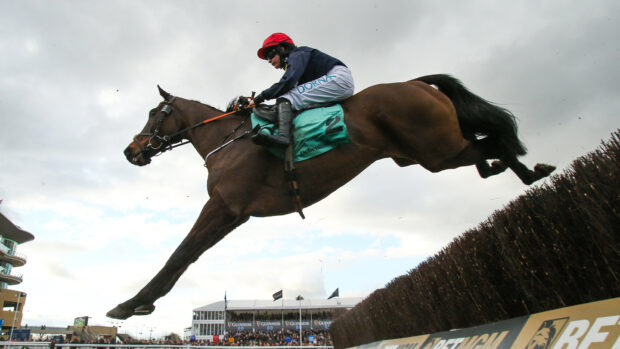Cotswolds-based National Hunt trainer Kim Bailey eyes up the Festival and discusses watering racecourses in January
Mid-February is a pivotal point in the jumps season. Most of the Cheltenham trial races are now run and all eyes naturally turn to the much anticipated four-day Cheltenham Festival in mid-March.
It is the meeting that makes or probably breaks you as a trainer, as having a winner there means far more than any other winner you might have during the season. It is the equivalent of Wimbledon in the tennis world, or Silverstone in motor racing, and trainers dream of walking into that hallowed winners’ enclosure.
Recently, though, a few cracks have appeared in Cheltenham’s armour as trainers are now talking of missing the Festival in favour of other big races. Even Nicky Henderson, by far the most successful trainer at the meeting, muted that Cheltenham was not the be all or end all for his owners when it comes to where their good horses might run.
Many feel that Cheltenham has become too top-heavy and too pressurised, and that the more relaxed and fun meetings of Aintree and Punchestown hold more appeal.
I started by saying that we were at a pivotal point of the season; in fact we are at a pivotal point in the sport. We are plagued with small, uncompetitive fields that are uncompelling for viewers.
We can blame climate change for the recent lack of rain, but racecourses are not prepared for the consequences. Watering in January and February could become the norm, and we should be prepared for it by installing better watering systems. I know that costs fortunes, but the alternative is not worth contemplating.
Newbury was not allowed to water last weekend as the environmental agency forbade it, and so they ran on fast ground, as did Warwick, who at least tried to water areas of their course.
But both racecourses suffered from small fields and this weekend’s meeting at Ascot could find the same.
As good as it looks?
Everyone looks to Ireland as an example of how to run jump racing and their recent Dublin Festival was a resounding success. There was plenty of English support, but that was two-legged not four, as only three England-based horses ventured over. We must not forget that the meeting has been plagued with difficulties in the past as trainers have been worried about running their good horses on faster ground and that the watering system just did not seem up to it.
This year, during probably the most difficult of all winters, Leopardstown watered to such an extent that all the leading trainers were happy to race their best horses and fabulous racing ensued.
On the face of it everybody went home delighted, but delve deeper and you’ll find a graded novice chase with five of its six runners trained by Willie Mullins and the winner by Gordon Elliott. Irish racing is far too top-heavy with all the main horses spread between three or four stables. Can you imagine this weekend’s Reynoldstown novice chase at Ascot having five Nicky Henderson runners and one from Paul Nicholls? There would be an outcry.
Thankfully for all its faults British jump racing has many big yards to spread those horses around, but be warned that might well change as costs and time move on.
Gambling with the future of the sport
Going back to pivotal moments, we have a major one in the funding of our prize money, which currently comes through a betting levy.
The Government’s new Gambling Act looks like changing the way we bet, with affordability checks needed before you’re allowed to gamble. There has already been a 20% drop in betting turnover and it will get worse.
If you are sitting in front of your TV watching Ascot on Saturday and want to have a £50 bet, it is not for anyone to tell you what you should choose to do – not the Gambling Commission nor the Government.
● Do you agree with Kim’s views about the shape of racing? Let us know at hhletters@futurenet.com including your name, nearest town and county for the chance to have your views published on the letters page in a future edition of Horse & Hound magazine
- This exclusive column will also be available to read in Horse & Hound magazine, on sale Thursday 16 February
You may also be interested in…

Trainer Gordon Elliott fined £1,000 in ‘mystery’ Cheltenham Festival contamination case

A true fighter: top horse has turned a corner after two colic operations

Meet the bright young jockey everyone’s talking about… (who has midwifery training and a territorial turkey called Trev)

Subscribe to Horse & Hound magazine today – and enjoy unlimited website access all year round
Horse & Hound magazine, out every Thursday, is packed with all the latest news and reports, as well as interviews, specials, nostalgia, vet and training advice. Find how you can enjoy the magazine delivered to your door every week, plus options to upgrade your subscription to access our online service that brings you breaking news and reports as well as other benefits.




